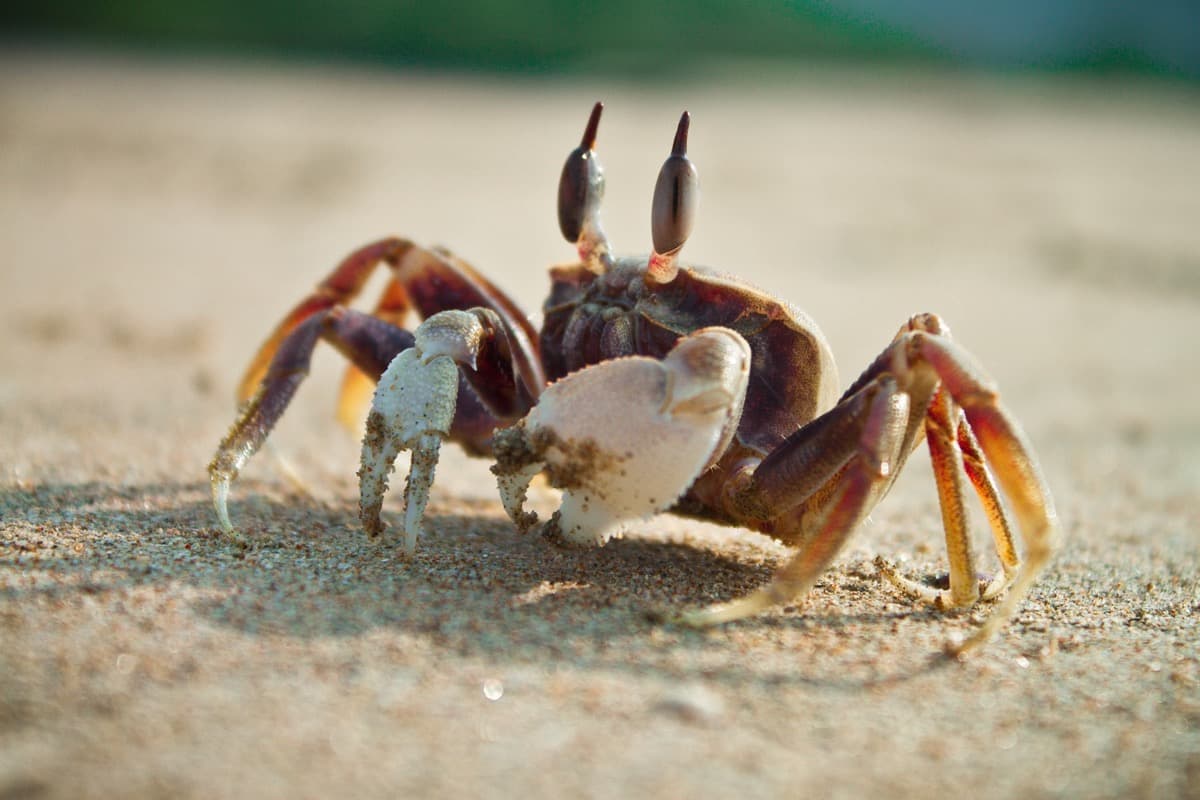Crab farming is raising crabs in captivity for commercial or personal purposes. It is a profitable venture gaining popularity among farmers and entrepreneurs. Crab farming can be done in ponds, tanks, cages, or pens, and it can be practiced on a small or large scale. Different species of crabs can be farmed, including mud crabs, blue crabs, and soft-shell crabs. Mud crabs are a popular species for farming in many countries, including India, as they have a high demand and can be sold at a high price.

Crab Farming Success Story
Success Story of Mr. Sharma
Mr. Sharma is a small-scale farmer from the region of Goa, India. He decided to venture into crab farming after researching the high demand for crabs in the local and international markets. He chose the mud crab species because of its fast growth, high survival, and high market demand. Mr. Sharma chose a 1-acre land near the coast with easy access to clean seawater for his crab farming project.
He built a pond with dimensions of 100 ft x 50 ft x 2 ft, which can hold up to 20,000 mud crabs. He installed a water pump and aeration system to maintain a constant seawater flow to the pond. He also constructed a shade to protect the crabs from direct sunlight and predators. Mr. Sharma bought 10,000 juvenile mud crabs from a reputable hatchery. He selected the healthy and active ones to ensure high survival rates.
The juvenile crabs were then acclimatized to the pond’s water parameters for two days before being released into the pond. After six months, the crabs were ready for harvest, weighing an average of 250-300 grams each. Mr. Sharma harvested the crabs using a crab net and sorted them according to size and weight. He sold the crabs to local seafood markets, restaurants, and exporters. The crabs fetched a good price of Rs. 1,000-1,200 per kg, giving Mr. Sharma a profit of Rs. 10-12 lakh per annum.
Management and Care
Mr. Sharma made sure to prepare the pond for the mud crabs properly. He removed any debris or obstacles from the pond, checked the water quality, and ensured the pond was deep enough for the mud crabs to thrive. Mr. Sharma was careful to select healthy juvenile crabs for his project. He ensured the crabs were disease-free and free from any deformities that could hinder their growth and survival.
Mr. Sharma provided his mud crabs with a balanced diet to ensure their health and growth. He provided a mix of natural feed like fish and prawns and supplemented them with formulated feed. He also monitored the feeding and adjusted the diet according to the growth rate of the crabs. Mr. Sharma ensured that the water in the pond was of the right quality and temperature. He regularly monitored the water pH, salinity, and temperature to ensure it was optimal for the mud crabs’ growth and survival.
Mr. Sharma proactively took measures to prevent and control diseases in his mud crab farming project. He used antibiotics and other medications judiciously when necessary and practiced biosecurity measures to prevent the introduction of diseases to the farm. He regularly monitored his mud crab farming project and took corrective measures whenever needed. He checked the pond’s water quality and temperature, monitored the crabs’ growth, and made sure that the equipment and infrastructure were working properly.
In case you missed it: A Step-By-Step Guide to Starting Your Own Crab Farm: Cultivation Process

Financial Aspects of Mr. Sharma’s Farm
Revenue
- Mr. Sharma sold 20,000 mud crabs at an average weight of 275 grams each.
- ·Total weight of the crabs sold is 5,500 kg (20,000 x 0.275).
- ·Average selling price of mud crabs is Rs. 500 per kg.
- Total revenue from selling mud crabs is Rs. 27.5 lahks (5,500 x 500).
Expenses
- Pond construction and installation of equipment cost Rs. 3 lahks.
- Juvenile crabs cost Rs. 2.5 lahks (10,000 juvenile crabs at Rs. 25 per crab).
- Feeding and labor costs were Rs. 3.5 lakh per annum.
- Miscellaneous expenses (such as electricity and maintenance costs) were Rs. 1,00,000 annually.
- Total expenses for the year were Rs. 10 lahks.
Profit
- The revenue generated from selling mud crabs was Rs. 27.5 lakh.
- The total expenses for the year were Rs. 10 lahks.
- The net profit for the year was Rs. 17.5 lakh.
In case you missed it: Hydroponic Farming Success Story: Profitable Soilless Cultivation

Conclusion
Mud crab farming can be a lucrative and profitable business in India, as demonstrated by Mr. Sharma’s success. With proper care and management, including selecting healthy juvenile crabs, appropriate feeding and nutrition, and regular monitoring and maintenance, mud crab farming can provide farmers with a reliable source of income. Mr. Sharma’s project was not only financially viable but also demonstrated the importance of careful planning and management to ensure the success of a mud crab farming project.
- Feed Your Flock for Less: Top 10 Tips to Save on Chicken Feed
- Ultimate Guide to Ossabaw Island Hog: Breeding, Raising, Diet, and Care
- Hatching Answers: The Top 10 Reasons Your Chickens Aren’t Laying Eggs
- Eggs and Economics: Breaking Down the Cost of Raising Backyard Chickens
- Defend Your Greens: Proven Methods to Keep Iguanas Out of Your Garden
- Ultimate Guide to Cinnamon Queen Chicken: A Comprehensive Guide for Beginners
- Ultimate Guide to California Tan Chicken: Breeding, Raising, Diet, Egg-Production and Care
- Ultimate Guide to Marsh Daisy Chicken: Breeding, Raising, Diet, and Care
- 10 Types of Chicken Farming Businesses You Can Start for Profits